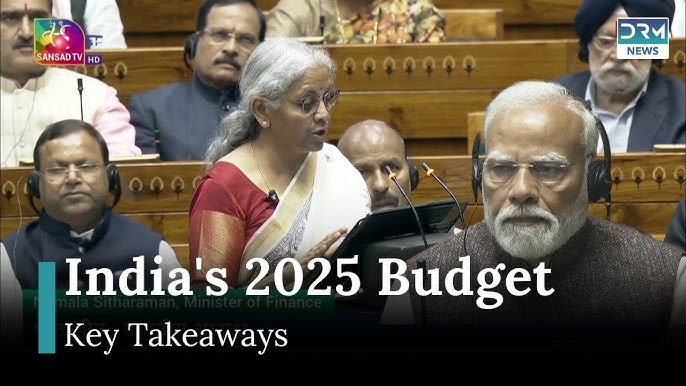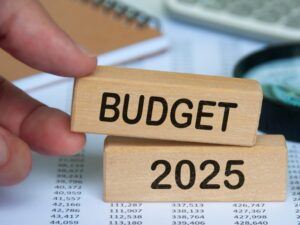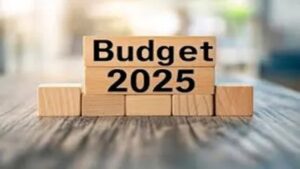India Hits a Milestone: ISRO Launches Its Heaviest Communication Satellite Yet, CMS-03
Budget 2025: Key Highlights, Major Reforms Fiscal Targets, Investments, and Growth Plans

Budget 2025
Budget 2025: On February 1, 2025, India’s Finance Minister, Nirmala Sitharaman, presented the Union Budget for the fiscal year 2025-26, marking her eighth consecutive budget presentation. This budget introduces significant reforms across various sectors, aiming to stimulate economic growth, enhance infrastructure, and support social welfare.
Taxation Reforms
A major highlight of the budget is the substantial relief provided to individual taxpayers:
- Income Tax Exemption: The income tax exemption threshold has been raised to ₹1.28 million (approximately $14,800), up from the previous ₹700,000. This move is designed to increase disposable income among the middle class, thereby boosting consumption and savings.
- Tax Rate Adjustments: Reduced tax rates have been introduced for incomes above the new exemption threshold, aiming to further alleviate the tax burden on individuals.
- TDS and TCS Rationalization: The budget proposes doubling the limit for Tax Deducted at Source (TDS) on interest for senior citizens from ₹50,000 to ₹100,000. Additionally, the annual limit for TDS on rent has been increased from ₹240,000 to ₹600,000.

Agriculture and Rural Development
The budget places a strong emphasis on revitalizing the agricultural sector and supporting rural economies:
- Increased Agricultural Spending: The government plans to raise agricultural spending by over 15%, marking the largest increase in six years. This funding will be directed towards developing high-yielding seed varieties, enhancing storage and supply infrastructure, and boosting the production of pulses, oilseeds, vegetables, and dairy products.
- National Mission for Crop Productivity: A six-year program has been announced to enhance the production of pulse crops and cotton, aiming to reduce reliance on imports. State agencies will purchase pulses at guaranteed prices to support farmers.
- Subsidized Farm Loans: The budget increases the subsidized farm loan limit, providing greater financial support to farmers.

Infrastructure and Capital Expenditure
To foster long-term economic growth, the budget outlines significant investments in infrastructure:
- Capital Expenditure (CAPEX): The government has allocated between ₹11 trillion and ₹11.5 trillion for CAPEX, reflecting a 15-17% increase compared to the previous year. This investment will focus on infrastructure projects such as roads, water supply systems, metro systems, railways, defense, digital infrastructure, green technologies, and social welfare initiatives.
- Ease of Doing Business: Measures to improve the business environment include establishing a high-level committee for regulatory reforms and creating an investment friendliness index to attract private investment.

Social Welfare and Employment
The budget introduces several initiatives aimed at social welfare and job creation:
- Formalization of Gig Economy Workers: Plans have been announced to formalize gig economy workers, improving their access to healthcare and welfare initiatives.
- Support for Startups and Innovation: Investments will be directed towards startups and innovation, fostering entrepreneurship and technological advancement.
- Tourism and Energy Sector Development: The budget outlines plans to boost tourism and invest in the energy sector, including a notable Nuclear Energy Mission to achieve 100 GW of nuclear power by 2047.
Fiscal Discipline
The government remains committed to fiscal prudence:
- Fiscal Deficit Target: The fiscal deficit is targeted at 4.4% of GDP for 2025-26, down from a revised 4.8% for the current year.
- Debt Reduction Strategy: There is a plan to reduce the debt-to-GDP ratio to 50% by March 2031 from the current 57.1%, aligning with global fiscal policy trends towards more flexible fiscal standards.

Corporate Sector Impact
The budget’s reforms have varying implications across industries:
- Beneficiaries: The fast-moving consumer goods sector is expected to benefit from increased consumer spending due to tax cuts. The automotive sector also anticipates gains from enhanced consumer purchasing power.
- Challenges: Insurance companies may face challenges as higher tax slabs reduce the attractiveness of tax-saving insurance products. The infrastructure sector experienced a slump due to a modest rise in capital expenditure.
In summary, the Union Budget 2025-26 presents a comprehensive strategy to stimulate economic growth, support the middle class, enhance agricultural productivity, invest in infrastructure, and maintain fiscal discipline. The government’s balanced approach aims to address current economic challenges while laying a strong foundation for sustainable development.
ALSO READ THIS: Raftaar Journey of Love 2025: From Wedding Bells to New Beginnings”


